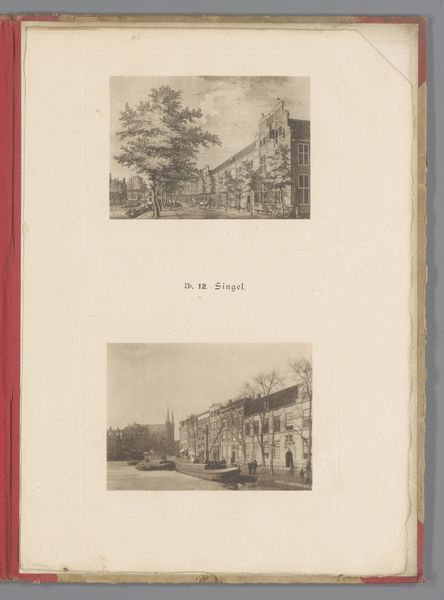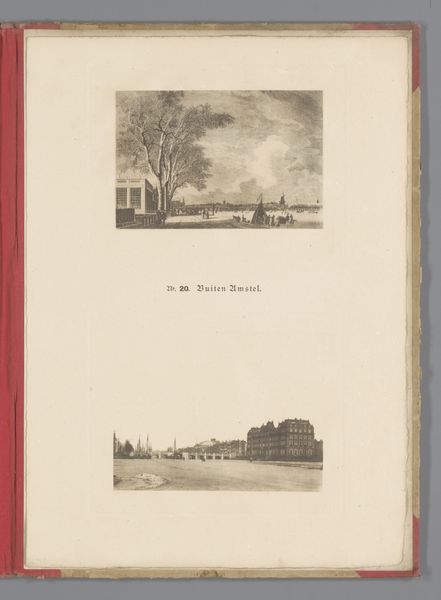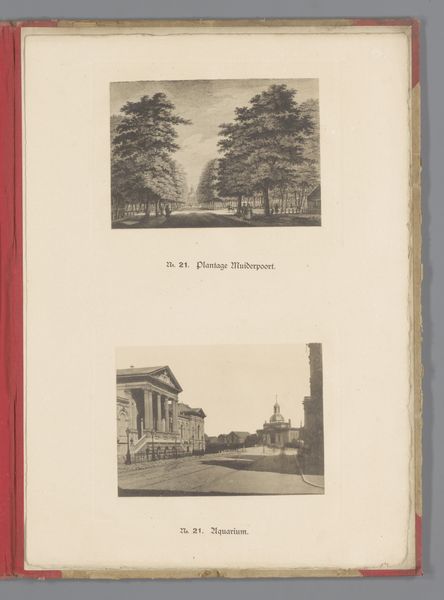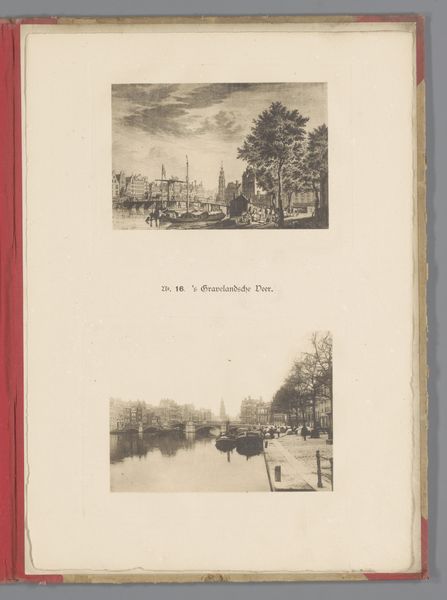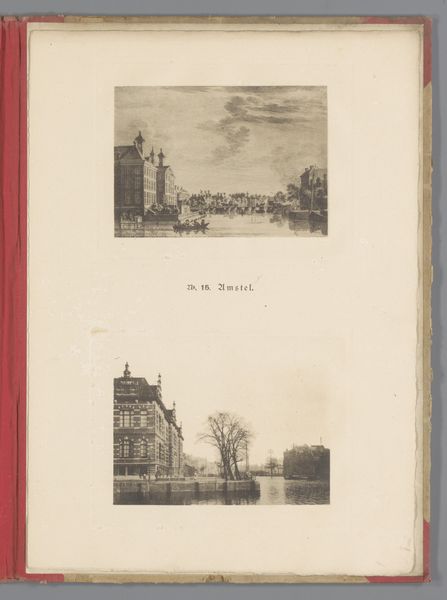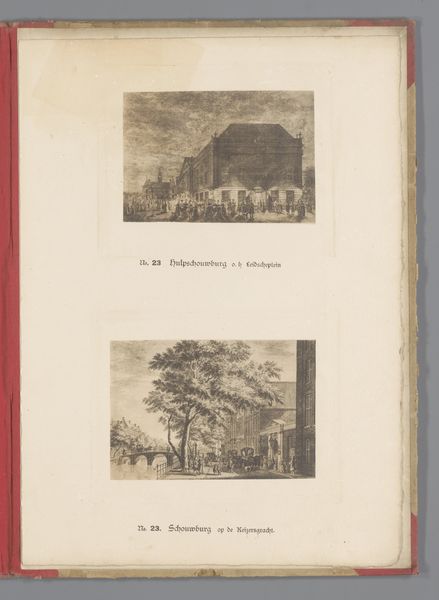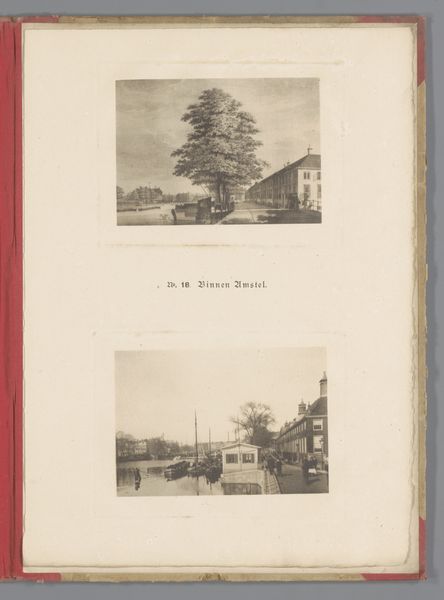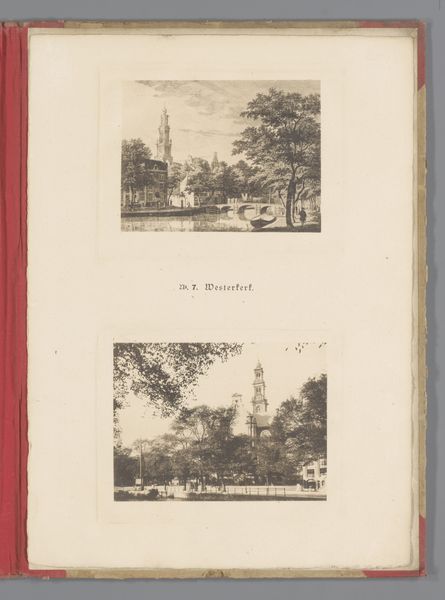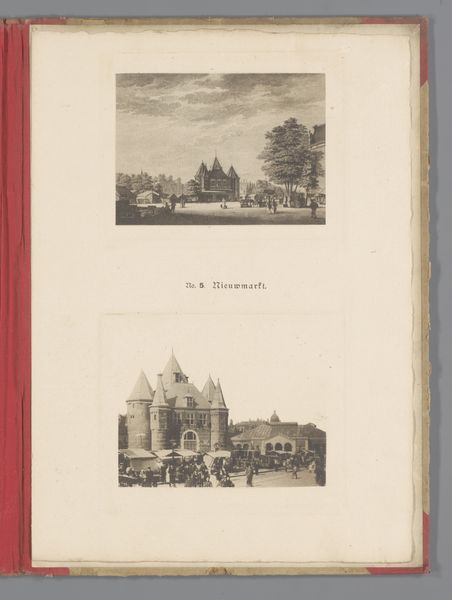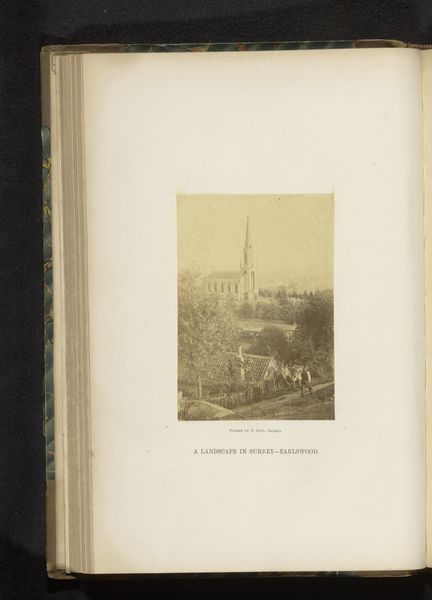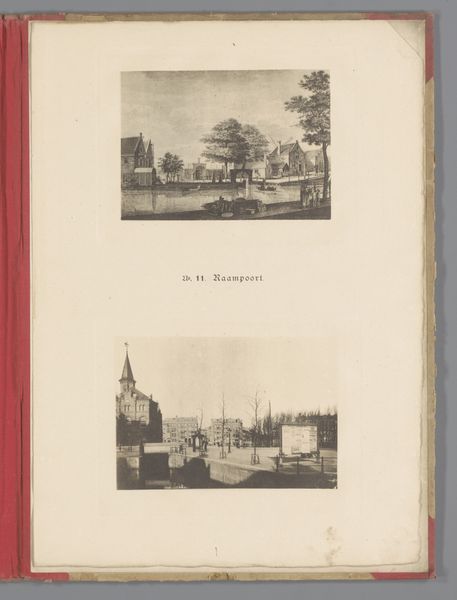
Twee gezichten op de Oude Kerk te Amsterdam, waarvan één reproductie van een prent door Paulus van Liender naar Jan de Beijer 1890 - 1900
0:00
0:00
print, etching
#
dutch-golden-age
# print
#
etching
#
landscape
#
cityscape
Dimensions: height 348 mm, width 250 mm, height 93 mm, width 137 mm, height 99 mm, width 135 mm
Copyright: Rijks Museum: Open Domain
Curator: What strikes me immediately about these twin etchings from circa 1890-1900, titled "Twee gezichten op de Oude Kerk te Amsterdam," is the artist’s dedication to replicating and contrasting perspectives. The Old Church becomes almost a character itself. Editor: I feel an immediate sense of calm. The grayscale palette, the delicate lines of the etching, they all contribute to a feeling of nostalgia, a quiet contemplation of the cityscape. The contrast between the two views creates a nice symmetry on the page as well. Curator: It is intriguing, isn't it? I mean, looking at Amsterdam during that period, you see a city grappling with immense social change and industrial advancement, challenging traditional ways of life. How might the artist use this familiar church as a fixed point in a rapidly changing world? Perhaps grounding viewers by showing them a timeless landmark. Editor: Possibly, although formally the choice creates an interesting mirroring effect. I notice that in the top image, the artist plays more with shadow and texture. You can almost feel the rough bark of the trees, while in the lower image, there is more of an emphasis on line, particularly in the sharp reflection in the canal. I find myself thinking about how subtle manipulations of the etching process emphasize different feelings evoked by the scenes. Curator: Absolutely. And consider that this is explicitly "een reproductie van een prent door Paulus van Liender naar Jan de Beijer," as indicated in the title. We're dealing with layers of representation. What commentary might the anonymous artist be making about historical interpretations of Amsterdam’s identity? Editor: That's an excellent point. There is a tension created between original vision and its reproduction, but also the tension within the individual works; it keeps me wondering how intentional all of this interplay between image and reproduction might be. Curator: It leaves us to ponder who controlled the narrative of Amsterdam then and how they chose to present it, doesn't it? The piece prompts reflection not only on a specific church, but on societal constructs and collective identity during a crucial era. Editor: It truly demonstrates the power of simple form. This quiet little scene evokes reflection on structure, replication, perception and so much more. It serves as a case study for considering how the barest changes can impact our perception.
Comments
No comments
Be the first to comment and join the conversation on the ultimate creative platform.
